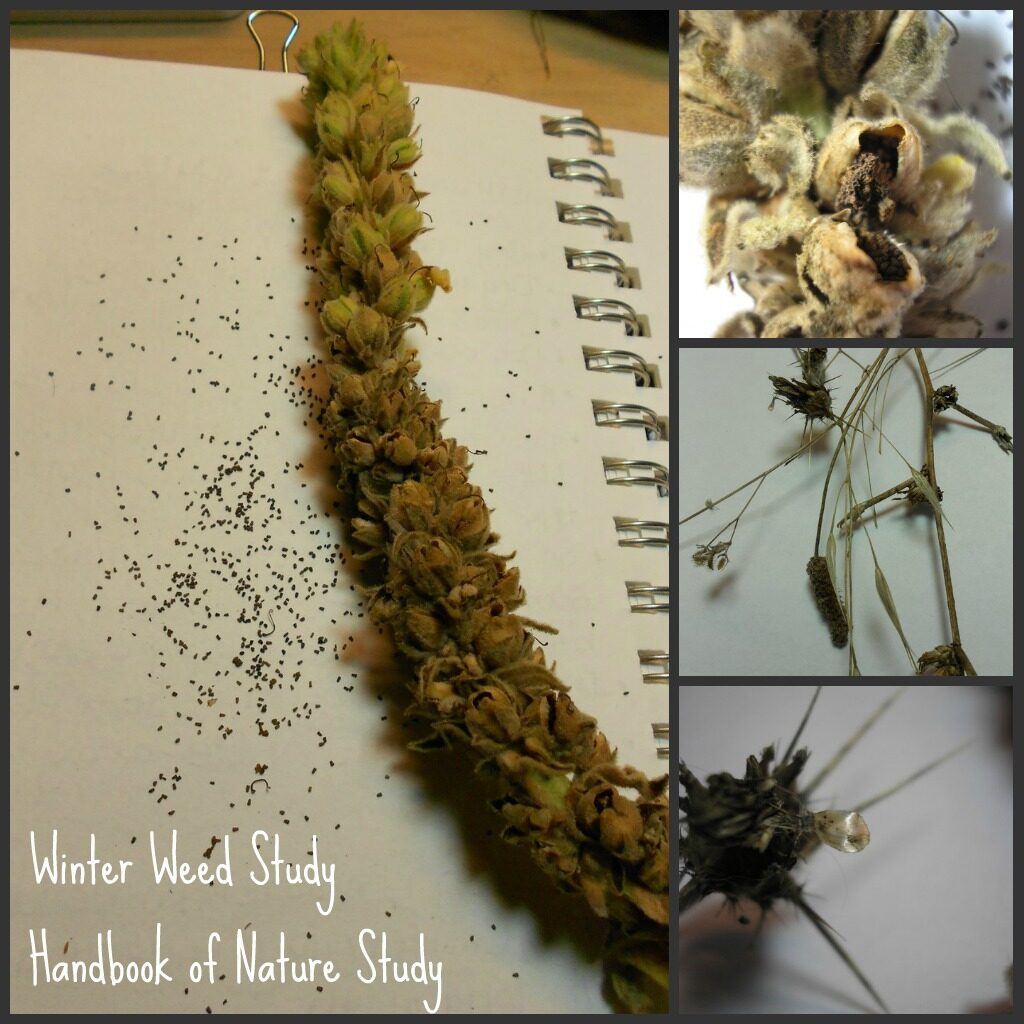
I don’t know about you but my garden has lots of weeds right now. It is going to take some serious effort to clean it up since I guess I have neglected it lately. This brought to mind a great idea for a challenge this week. Hopefully, you have some weed in your yard….or am I the only one?
I had already decided to introduce the idea of seed saving and then with all the weeds, I came up with a sort of combination challenge.
1. Weed study using the Handbook of Nature Study
2. Observing and collecting seeds.
As the flowers start to fade and dry, I try to gather a few of the heads to collect the seeds from. There are some flowers that are easier to get the seeds from and some that seem to not make it through the winter. I have saved a few seeds in the past by collecting the seeds and then pouring them all into a paper bag to sow in the spring. We will consider this a challenge-wide experiment to see what we can collect, save, and then what eventually grows.
Marigolds are an easy first flower to save the seeds from and I collect lots of the seeds and put them into an envelope for sprouting next spring. This pile is about six marigold blooms. They actually need to be a bit drier before I collect them but you get the idea how many seeds there are potentially in a small number of flower heads from the size of this pile.
Hollyhocks work well too but you have to remember they don’t bloom their first year so they are a long term plant in your garden.
I have never tried Morning glories but I am going to give it a shot this year and see how it goes.
If you want more information on saving seeds, there is a link below in the challenge that you can read.
Outdoor Hour Challenge #30
Weeds and Seeds
1. This week we are going to have a two-part assignment.
Part 1: Read in the Handbook of Nature Study pages 512-513 on beginning a weed study. This is a terrific section to read aloud before your outdoor time this week. [Note: If it offends your family to say that “nature is the great farmer”, please feel free to insert God’s name in place of the word nature.] Skim down the table of contents in the weed section and see if you recognize any weeds from your area and read at least the introduction material to yourself before your outdoor time.
“A weed is a plant growing where we wish something else to grow, and a plant may, therefore, be a weed in some locations and not in others.”
Handbook of Nature Study, page 512
Part 2: Spend your 15-20 minutes of outdoor time with your children in your own yard or on your own street. Pay attention to two opportunities this week. First, look for some weeds growing in your own garden, yard, or along your street. Remind your children of the definition of a weed and see if they can apply it to your local plants. Secondly, see if you can find any seeds to collect and to observe and possibly save to grow next year.
Here is a website for more information on collecting and saving seeds from your garden.
Saving Seeds
Possible seeds to look for that are easy to find and grow:
- Sunflowers
- Dandelions
- Marigolds
- Cosmos
- Zinnias
Optional Activity:
If you want to really find some seeds and you have access to a little open ground like a pasture, meadow, or field, try this activity.
Sock Seeds
They say this activity works best in late summer or early fall.
2. After your outdoor time, spend a few minutes discussing anything you found of interest. Topics might include the weeds you observed, the beginnings of the change in the plants and trees in your neighborhood for the autumn season, or the change in weather if you have any. If you are completing the Sock Seed project, spend some time examining your socks before you plant them in the soil. Use a magnifying lens to get a closer look.
This challenge is part of my Garden Flowers ebook. This ebook has ten garden-related challenges that will walk you through a study of garden flowers using the Handbook of Nature Study. In addition to the challenges already written, there will be more photos, nature journal examples, book lists, and totally new notebook pages designed to go with each of the Garden Flower Challenges.
